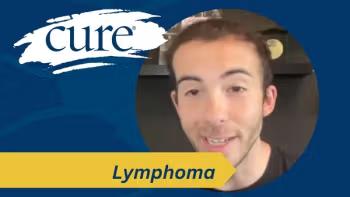
FDA Approves Vyloy for HER2-Negative Gastric or GEJ Adenocarcinoma
Key Takeaways
- Vyloy, a CLDN18.2-directed antibody, is approved for HER2-negative gastric or GEJ adenocarcinoma with CLDN18.2-positive tumors.
- The Ventana CLDN18 (43-14A) RxDx Assay identifies patients eligible for Vyloy treatment.
The FDA has approved Vyloy for patients with HER2-negative gastric or gastroesophageal junction (GEJ) adenocarcinoma with CLDN18.2-positive tumors.
The Food and Drug Administration (FDA) has approved Vyloy (zolbetuximab-clzb) with fluoropyrimidine- and platinum-containing chemotherapy for the first-line treatment of adults with locally advanced unresectable or metastatic human epidermal growth factor receptor 2 (HER2)-negative gastric or gastroesophageal junction (GEJ) adenocarcinoma with tumors that are CLDN18.2 positive, the agency has announced.
Vyloy is a claudin 18.2 (CLDN18.2)-directed cytolytic antibody, according to the FDA.
The agency has also approved the Ventana CLDN18 (43-14A) RxDx Assay companion diagnostic device to identify patients with gastric or GEJ adenocarcinoma who may be eligible for treatment with Vyloy.
The efficacy of Vyloy was shown in the SPOTLIGHT and GLOW clinical trials of patients with CLDN18.2-positive advanced unresectable (not surgically removable) or metastatic (spread from its original site to another part of the body) HER2-negative gastric or GEJ adenocarcinoma.
SPOTLIGHT included 565 patients assigned to receive either Vyloy with mFOLFOX6 chemotherapy or placebo with mFOLFOX6 chemotherapy. The median progression-free survival (the time a patient lives without their disease spreading or worsening) was 10.6 months in patients from the Vyloy group and 8.7 months in patients from the placebo group, while the median overall survival (the time a patient lives, regardless of disease status) was 18.2 months in the Vyloy group and 15.5 months in the placebo group.
GLOW included 507 patients who received either Vyloy with CAPOX chemotherapy or placebo with CAPOX chemotherapy. The median progression-free survival was 8.2 months in the Vyloy group and 6.8 months in the placebo group, and the median overall survival was 14.4 months in the Vyloy group and 12.2 months in the placebo group, respectively.
Regarding side effects, at least 2% of patients from the SPOTLIGHT study experienced vomiting, nausea, neutropenia (a low count of neutrophils, a type of white blood cell), febrile neutropenia (fever with neutropenia), diarrhea, intestinal obstruction, pyrexia (fever), pneumonia, respiratory failure, pulmonary embolism, decreased appetite and sepsis. In the GLOW study, at least 2% of patients experienced vomiting, nausea, decreased appetite, decreased platelet count, upper gastrointestinal hemorrhage, diarrhea, pneumonia, pulmonary embolism and pyrexia.
"The approval of Vyloy as the first and only targeted therapy for CLDN18.2-positive patients in the U.S. further delivers on our relentless pursuit of scientific progress for devastating diseases like gastric and GEJ cancers, which are often only discovered at the advanced stage,” said Moitreyee Chatterjee-Kishore, senior vice president and head of immuno-oncology development for Vyloy manufacturer Astellas, in a news release. “This achievement is the result of years of dedicated research and development focused on targeting a novel biomarker, and we are grateful to the patients, investigators, and Astellas team members who have made this important advancement for patients a reality."
Dr. Samuel J. Klempner, associate professor at Harvard Medical School and a medical oncologist at Massachusetts General Hospital, both in Boston, also stated in the news release that "while there have been advances in the first-line treatment of locally advanced unresectable and metastatic gastric and GEJ cancers in the last several years, there is still a tremendous unmet need among our patients. The approval of Vyloy, based on the pivotal phase 3 SPOTLIGHT and GLOW trials, brings forward a novel biomarker and new therapy for patients whose tumors are CLDN18.2 positive, and for those on the frontlines of treatment decision-making.”
Reference
“FDA approves zolbetuximab-clzb with chemotherapy for gastric or gastroesophageal junction adenocarcinoma,”posted online by the Food and Drug Administration.
For more news on cancer updates, research and education, don’t forget to




